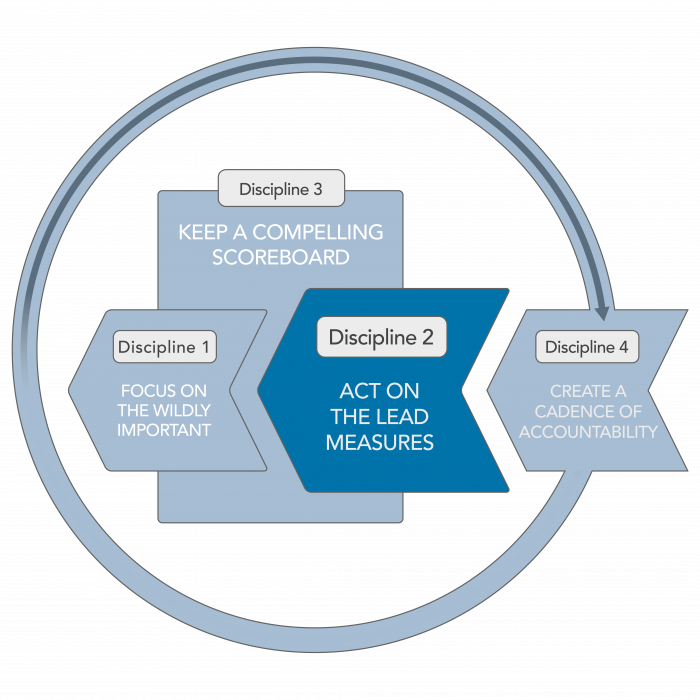While a lag measure tells you if you’ve achieved the goal, a lead measure tells you if you are likely to achieve the goal.
Lead measures track the critical activities that drive or lead to the lag measure. They predict the success of the lag measure and are influenced directly by the team. An example of a lag measure is weight loss. Which activities or lead measures will lead to weight loss? Diet and exercise! Proper diet and exercise predict the success of weight loss, and they are activities that we can directly influence.
Simple enough, but be careful: even the smartest people fall into the trap of fixating on a lag measure that they can’t directly influence. This is because lags are easier to measure and they represent the result we ultimately want. Think of a lead measure as a lever that moves your Wildly Important Goal®.
Act on the lead measures
Long-term plans are often too rigid. They cannot adapt to the constantly changing needs and environment of the business. Discipline 2 requires you to define the daily or weekly measures, the achievement of which will lead to the goal.
Then, each day or week, your team identifies the most important actions that will drive those lead measures. In this way, your team is creating a just-in-time plan that enables them to quickly adapt, while remaining focused on the WIG®.

Focusing on the wildly important requires you to go against your basic wiring as a leader to do more, and instead, focus on less so that your team can achieve more.
- Sean Covey







